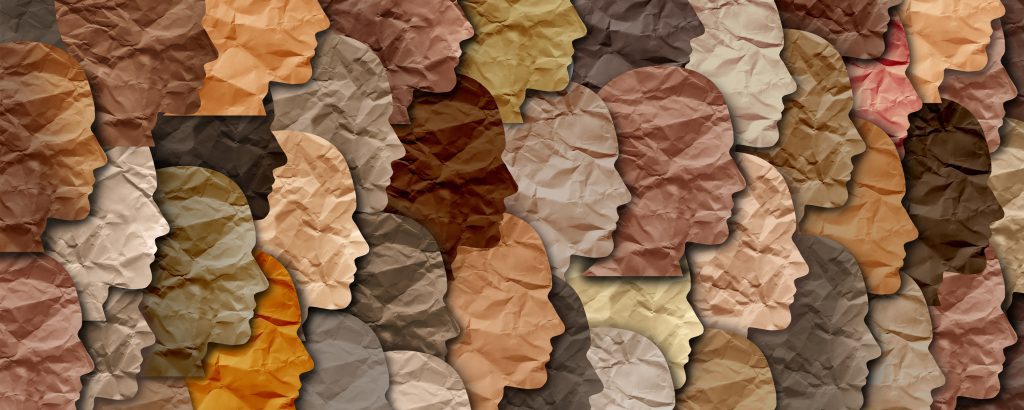Recent events have made it clearer than ever: Racism and inequality are still realities in our society, and discrimination from decades past has left scars on this country. As businesses, we have a unique opportunity to contribute to balancing the playing field.
Arcoro has kept gender and racial diversity top of mind at every hiring turn while seeking to hire the most qualified candidates we can find, and we are proud of our diverse team. But we know that we could do more.
So what does building a diverse workplace really mean for businesses? And is the work of HR and management done once you’ve filled positions with minorities or women?
We did some research on diversity and inclusion for our own benefit and that of others, and we wanted to share what we’ve learned.
Why is diversity important?
It’s widely known that diversity is a win-win for institutions and businesses, especially when paired with genuine efforts at inclusion.
Racism can continue to exist as a subtle undercurrent in our society—even when the most well-meaning among us aren’t aware of it. Therefore, we can’t just coast along and assume that if we don’t do anything bad, then the problem will just go away.
For that reason, it seems important to look at a few key terms that help clarify why organizations and institutions have a responsibility to be proactive in building diversity and fostering inclusion.
What is systemic racism?
As defined by the president of the National Association of the Advancement of Colored People (NAACP), systemic racism consists of systems or structures that have procedures or processes that disadvantage African Americans.
What is cultural racism?
Aspects of society that attribute value and normality to white people and whiteness, and devalue, stereotype or label minorities as “other,” different or of lesser value. Source: W.K. Kellogg Foundation, Racial Equity Resource Guide.
What is diversity?
The wide range of national, ethnic, racial and other backgrounds of U.S. residents and immigrants as social groupings, co-existing in American culture. Often used to include aspects of race, ethnicity, gender, sexual orientation, class and more. Source: The Institute for Democratic Renewal and Project Change Anti-Racism Initiative.
What is inclusion?
Inclusion authentically brings traditionally excluded individuals and/or groups into processes, activities and decision or policy-making. Source: W.K. Kellogg Foundation, Racial Equity Resource Guide.

How diversity impacts the workplace
It’s become clear that diversity in the workplace brings many rewards. You don’t have to search long to find studies that show concrete financial benefits.
Diversity also brings many indirect benefits that boost a business by making its workforce smarter, more efficient and happier:
- Better decision-making – Businesses typically kick the can down the road on the same issues that they can never seem to solve. This might because they always consider the same two or three solutions, and find that they don’t work. Research has shown that when teams are inclusive, they make successful decisions 60 percent more often than non-diverse groups.
- More efficient innovation – A recent study found that companies with pro-diversity cultures—specifically regarding the treatment of women and minorities—innovate faster and more efficiently in the form of new product releases and new patents filed.
- More engaged and happier – The 2018 Deloitte Millennial Survey showed that Millennials value and seek out diversity and inclusion in the workplace more than Boomers and Gen Xers, and a more diverse, inclusive work environment is the key to their loyalty. This is a wise outlook: A separate Deloitte study of 1,550 manufacturing, retail and healthcare employees in Australia found that workers who feel their company is committed to diversity and inclusion also report an 83 percent better ability to innovate and a 42 percent improvement in team collaboration.
What workplace diversity and inclusion really means
“Diversity in the workplace is an asset for both businesses and their employees, in its capacity to foster innovation, creativity and empathy in ways that homogeneous environments seldom do,” writes Executive Chairman at QI Group of Companies Vijay Eswaran for the World Economic Forum. “Yet it takes careful nurturing and conscious orchestration to unleash the true potential of this invaluable asset.”
This brings us back to one of our first questions: Is it enough to just hire a more diverse team, give your employees an hour or two of diversity training, and hope for the best?
The research shows that it isn’t. According to the Harvard Business Review, when managers are threatened with stories of discrimination lawsuits or “ordered” to get rid of their biases by way of diversity or bias training, there can be a backlash.
HBR found that when employees are invited to join a pro-diversity group at will and they choose to sign up, this strengthens their self-image as someone who is pro-diversity.

How to make diversity happen, and count, at your company
We gathered a few common sense and research-proven approaches to making diversity really work so that employees feel a lasting sense of belonging, and your business reaps the greatest benefits.
Look in new places.
You can’t expect to find a more diverse pool of candidates if you keep looking for new workers or writing your job posts the same way. Reach out to job boards that target minorities, ask your minority employees for referrals, and make prominent mention of your company’s attitude toward inclusion in your job postings.
Train the trainers
Take a “train the trainers” approach: Offer an ongoing diversity group or initiative and let those who are interested or enthusiastic sign up, whether managers or employees. They become more enthusiastic, and more likely to follow up and intervene when language or behavior should be called out as racist or intolerant. HBR reported that this approach made employees who sign up also feel more invested in general, and are more likely to include diversity in their future team-building, recruitment and retention plans.
Include “inclusion” in your initiative
Though a portion of the companies McKinsey studied had made great strides, McKinsey’s 2019 study also examined why more companies hadn’t moved further toward their diversity goals since 2014. They did “social listening” by taking stock of comments employees wrote in online company reviews. They discovered it was more than diversity that mattered: the majority of employees’ feedback about diversity at their companies was positive, but there were many more negative than positive comments about inclusiveness and equality in the workplace and on the part of leadership.
Start small and large
While hiring a diverse group of workers lays the groundwork, it’s the little things that ultimately add up to a more inclusive culture. Announce a zero-tolerance policy for words or actions that harass or bully others or openly dismiss minority points of view. Train your managers and staff to identify and address these acts on the spot.
Arcoro is committed to help as we all move toward a more inclusive, supportive society. Contact us to automate time-consuming HR processes so you can focus on building a stronger, more diverse company that is poised to excel.




